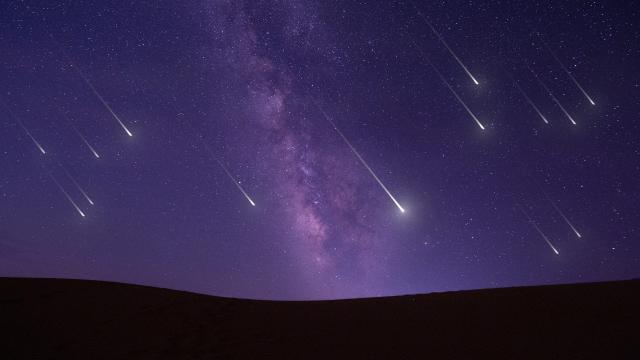In addition to a Super Moon and warming spring air, April comes with tidings of space rocks. Beginning April 16, Earth will traverse the tail of the comet C/1861 G1 Thatcher, which will see the Lyrid meteor shower streak across the night sky. Of course, this isn’t the same as glancing upwards to witness the looming moon hover above us, but more an exercise in patience, as meteors are far more fleeting that other celestial phenomena.
Here’s what to know about the Lyrids and how to see them later this month.
What are the Lyrids?
The Lyrids garner their name from the constellation Lyra, which is “associated with the myth of the Greek musician and poet Orpheus,” according to Constellation Guide. The constellation hangs in the northern sky just beneath the star Vega, which is visible in the summer sky forming an “an asterism known as the Summer Triangle,” along with the stars Deneb and Altair, Space.com notes.
The Lyrids are a welcome sight for meteor hunters who are starved of their favourite celestial sights from January to mid-April. But every April, as Earth passes through the debris left by the tail of the C/1861 G1 Thatcher, the Lyrids race across the sky.
Per EarthSky, the Lyrids are an annual event that’s usually active for about nine days. This year, the peak is expected to occur on or around April 19. Here’s how the experts elaborate:
The Lyrids are active each year from about April 16 to 25. In 2021, we expect the shower to pick up steam beginning late at night Monday, April 19, probably peaking in the predawn hours on Thursday, April 22. The following morning (April 23) might be good too, if you’re game.
Generally speaking, the meteors will be active between moonset and dawn during this time frame.
One helpful hint: locate the radiant point
The Lyrids will whet your appetite for meteors, but only just. They’re not exactly a frenzy, as they usually only appear in streams of about 10 to 15 per hour. (On occasion they can overwhelm patches of the sky in groups of around 100 per hour, but such a sight is rare).
One way to make sure you actually catch the Lyrids is to locate Vega, the brilliant star illuminating the meteors’ path at their peak. According to EarthSky, this is all about when the radiant point — in this case, Vega — rises. You can locate Vega if you “look northeast in the evening for a bright, bluish star above the northeastern horizon.” When it comes to people in the Northern Hemisphere, this is typically between nine and 10 p.m. local time. If you’re in the Southern Hemisphere, your chances of catching the show at peak brilliance hinges on how early you get up (or how late you stay up).
As Earth Sky explains:
Because this shower’s radiant point is so far north on the sky’s dome, the star Vega rises only in the hours before dawn, for you. It’ll be lower in the sky for you than for us farther north on Earth’s globe, when dawn breaks. That’s why you’ll see fewer Lyrid meteors. Still, you might see some!
The same protocol applies when it comes to creating your own best conditions for catching the meteors. Avoid light pollution, gaze upwards towards the north, and welcome 2021’s first burning space rocks.

Leave a Reply
You must be logged in to post a comment.